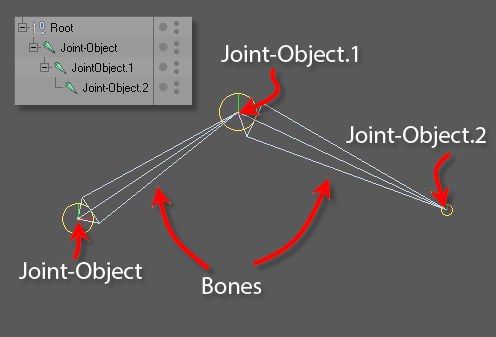![]() Joint
Joint
Joint
Cinema 4D's aging bones system has been replaced with a new joint-based character animation system in Cinema 4D R10. In the new system, bones are no longer objects in their own right but are now simply the gaps between joints used as a visual aid belonging to the joints.

The new approach has many advantages over the old system. For example, character rigs are now fully scalable yet the joints are very flexible and you can carry on working the same way you're used to from the previous system.
It's very important to understand the difference between the old bone objects and the bones displayed by the new joint objects. In the following text, the term bone refers to the bone displayed by the new joint objects. The old bone object is referred to as the bone object.
Unlike bone objects, joints are not deformers. The character is deformed by a single deformer, the skin object, instead of by an entire hierarchy of deformers. This allows the mesh to be deformed much faster and you can work with the character's set-up much more flexibly because you don't have to worry so much about the hierarchy. Joint object hierarchies can be placed completely independently in the scene hierarchy. In addition, you can use any type of Cinema 4D object, not just joints, to deform the mesh provided you assign a Weight tag to the object. Keep in mind, however, that only the joint object has special options for displaying bones and solving IK chains.